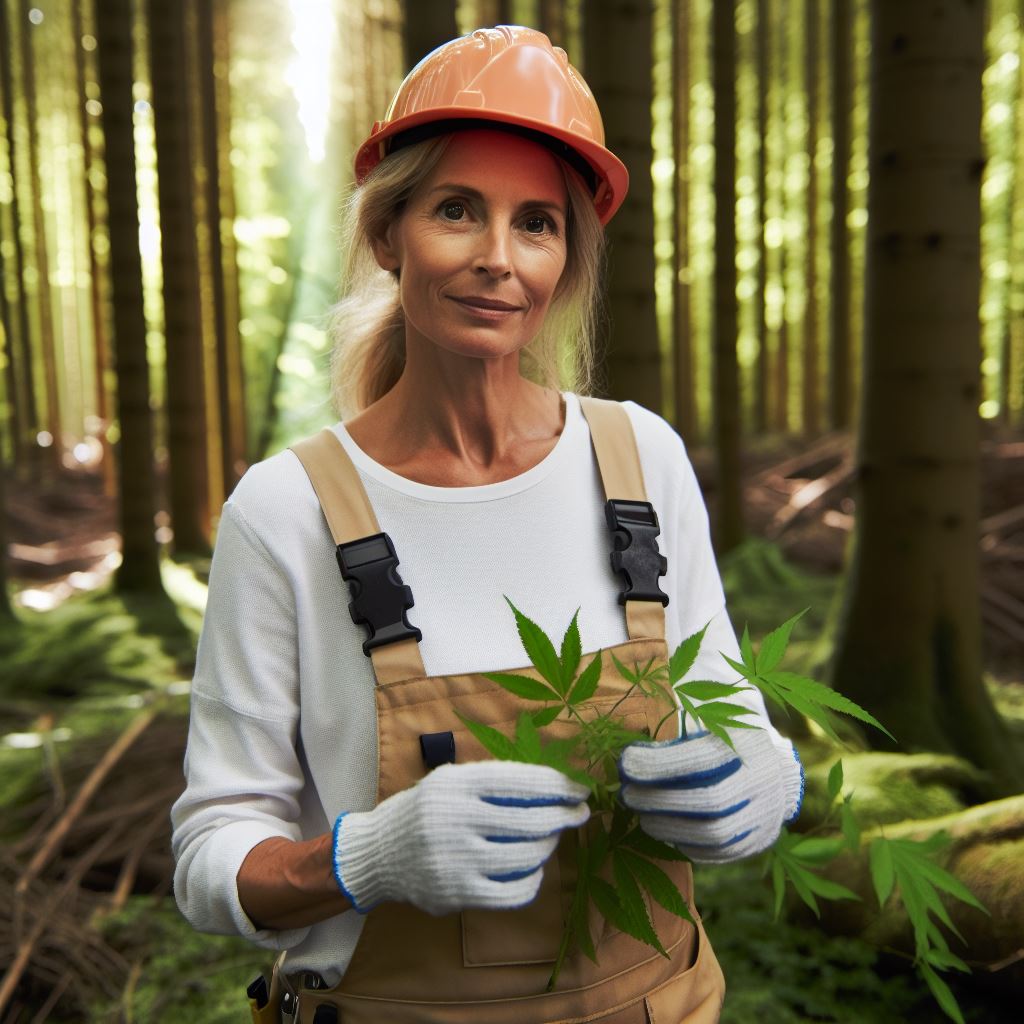Introduction
Forestry laws and regulations in the UK play a crucial role in preserving and managing the country’s forests. These laws are essential for ensuring sustainable forestry practices and protecting the environment.
Professionals and enthusiasts in the field of forestry must have a thorough understanding of these laws to ensure compliance and maintain the health of our forests.
By following these regulations, we can safeguard biodiversity, mitigate climate change, and create a sustainable future for generations to come.
In this post, we will explore the significance of UK forestry laws and regulations and their impact on the forestry sector.
Whether you are a forest manager, researcher, or simply fascinated by the wonders of nature, this post will provide valuable insights into the realm of UK forestry laws.
Join us as we delve into this dynamic and crucial aspect of forestry management in the United Kingdom.
Overview of UK Forestry Laws
Overview of the legislative framework governing forestry in the UK
- The forestry industry in the UK is governed by a comprehensive legislative framework.
- Several key legislations and regulations have been enacted to regulate and control forestry practices.
- The Forestry Act 1967 is one of the primary laws governing forestry operations in the UK.
- This act provides the legal framework for the establishment of public and private woodlands.
- Another significant piece of legislation is the Forestry and Land Management (Scotland) Act 2018.
The legislative framework for UK forestry is essential to ensure the sustainable management of woodlands and protect the environment.
The Forestry Act 1967 and the Forestry and Land Management (Scotland) Act 2018 lay the foundation for the establishment and regulation of woodlands across the country.
The inclusion of Environmental Impact Assessment (Forestry) Regulations emphasizes the importance of minimizing ecological impacts and promoting responsible forestry practices.
Key legislation and regulations that apply to the industry
- This act focuses on sustainable land management and the provision of forestry support and services.
- A crucial regulation in the UK forestry industry is the Environmental Impact Assessment (Forestry) Regulations.
- These regulations require the assessment of potential ecological impacts before undertaking forestry operations.
- The UK government has established several governing bodies responsible for enforcing forestry laws and regulations.
- The Forestry Commission is the primary body responsible for overseeing forestry practices in England.
These regulations require thorough assessments before undertaking any forestry operations.
The governing bodies, such as the Forestry Commission, Forestry and Land Scotland, and Natural Resources Wales, play a crucial role in enforcing forestry laws and regulations.
They oversee licensing, facilitate sustainable forest management, and support the expansion and improvement of woodlands.
Main governing bodies responsible for enforcing these laws and regulations
- They grant licenses, regulate felling, and provide support for the establishment of woodland sites.
- In Scotland, the responsibility lies with Forestry and Land Scotland, which manages public forests and woodlands.
- Forestry and Land Scotland also promotes sustainable forest management and conservation.
- In Wales, Natural Resources Wales is the governing body responsible for managing and regulating forestry.
- They implement forestry policies, issue licenses, and support woodland expansion and improvement projects.
Overall, the legislative framework and governing bodies ensure that the UK forestry industry operates in an environmentally conscious and sustainable manner.
By adhering to these laws and regulations, the industry can contribute to biodiversity conservation, mitigate climate change, and provide valuable timber resources for various sectors.
Forest Management Planning
Forest management planning plays a crucial role in ensuring the sustainable management of forests in accordance with UK laws.
Importance of Forest Management Planning
A well-developed forest management plan is essential for multiple reasons:
- Conservation: Forest management planning helps protect and conserve the natural resources present in forests.
- Biodiversity: It helps maintain and enhance biodiversity by identifying key habitats and protecting endangered species.
- Sustainability: Forest management planning ensures that timber harvesting and other activities are carried out sustainably, preventing overexploitation.
- Climate Change Mitigation: Effective planning aids in combating climate change by promoting carbon sequestration and reducing greenhouse gas emissions.
- Recreation and Tourism: It considers recreational aspects by providing opportunities for outdoor activities and boosting nature-based tourism.
- Economic Benefits: Forests managed through robust plans offer economic benefits through timber production and job creation.
Process of Developing a Forest Management Plan
The development of a forest management plan involves a series of interconnected steps:
- Situation Analysis: Assessing the current state of the forest, including its ecological, social, and economic aspects.
- Goals and Objectives: Defining clear goals and measurable objectives that align with the forest’s long-term vision.
- Stakeholder Engagement: Consulting with relevant stakeholders, such as local communities and environmental organizations.
- Inventory and Mapping: Conducting an inventory of forest resources and creating accurate maps.
- Risk Assessment: Identifying potential risks, such as pests, diseases, or climate-related hazards.
- Management Strategies: Develop appropriate strategies to address identified risks and achieve the defined objectives.
- Monitoring and Evaluation: Establish monitoring protocols to assess the plan’s effectiveness and make necessary adjustments.
Key Elements of a Forest Management Plan
A comprehensive forest management plan must consider several key elements:
- Forest Description: Detailed information about the forest, including its location, size, topography, and vegetation.
- Legal and Social Considerations: Compliance with relevant laws and regulations, as well as social and cultural values associated with the forest.
- Inventory Data: Accurate data on forest resources, including tree species, age, growth rates, and health.
- Ecosystem Management: Strategies to maintain or enhance ecosystem health, including measures for soil and water conservation.
- Timber Production: Sustainable timber harvesting plans, ensuring responsible logging practices are implemented.
- Wildlife Conservation: Measures to protect and enhance wildlife habitats, facilitating the preservation of biodiversity.
- Recreation and Tourism: Designation of areas for recreational activities, considering visitor safety and environmental sustainability.
- Fire Prevention and Control: Strategies to prevent and effectively respond to forest fires, keeping ecosystems and nearby communities safe.
- Monitoring and Review: Regular monitoring to track progress, assess impacts, and adapt management strategies as needed.
Forest management planning is of utmost importance to ensure the sustainable use and conservation of forests in the UK.
By following a well-defined process and considering key elements, these plans contribute to the ecological, economic, and social well-being of forests and surrounding communities.
Read: The Evolution of Fishing in the UK: A Journey
Biodiversity and Conservation Regulations
In the United Kingdom, biodiversity conservation plays a crucial role in the forestry sector, aiming to protect and enhance the natural habitat within forests.
Various regulations have been put in place to ensure sustainable forest management practices that prioritize biodiversity.
UK’s Approach to Biodiversity Conservation in the Forestry Sector
- The UK takes a proactive stance towards biodiversity conservation in the forestry sector.
- It recognizes the importance of maintaining a diverse range of native plant and animal species.
- Conservation efforts aim to create and preserve suitable habitats for wildlife.
- Preserving biodiversity helps to maintain the overall health and resilience of forest ecosystems.
- Forests are viewed as valuable resources for preserving wildlife, including rare and endangered species.
Regulations to Protect and Enhance Biodiversity in Forests
- The Forestry Act of 1967 established the Forestry Commission, responsible for managing and protecting forests and woodlands.
- The UK Biodiversity Action Plan outlines strategic measures for conserving biodiversity across various sectors, including forestry.
- Sites of Special Scientific Interest (SSSIs) designate areas with important ecological or geological features.
- Forest Stewardship Council (FSC) certification ensures sustainable forest management practices that consider biodiversity.
- The National Planning Policy Framework includes provisions to protect biodiversity in the planning process.
Impact of Regulations on Forest Management Practices
- The regulations promote the implementation of sustainable forest management techniques.
- Forest owners and managers must consider biodiversity conservation in their operations.
- The protection of SSSIs restricts certain activities, preventing damage to critical habitats.
- FSC certification encourages forest management practices that enhance biodiversity and protect endangered species.
- Sustainable forest management contributes to the overall health and productivity of forests.
Overall, the UK recognizes the significance of biodiversity conservation in the forestry sector.
By implementing a range of regulations and initiatives, the country aims to protect and enhance the natural habitats within forests.
This approach ensures that forests remain rich in biodiversity while supporting sustainable forest management practices.
Read: Modern Fishing Gear: UK Fishermen’s Toolkit
Personalized UK Career Consulting
Receive tailored career guidance designed just for you. Get actionable steps and expert support to boost your career in 1-3 days. Take control of your career now.
Get Started
Tree Felling and Timber Harvesting Regulations
In the United Kingdom, tree felling and timber harvesting activities are regulated by a set of comprehensive laws and regulations.
These aim to protect forests, promote sustainable practices, and ensure compliance with environmental standards.
The laws and regulations governing tree felling and timber harvesting activities in the UK
The primary legislation governing tree felling and timber harvesting activities in the UK is the Forestry Act of 1967.
This act provides the legal framework for the management, conservation, and production of forests in the country.
Under the act, it is illegal to fall, uproot, or destroy any tree in a wooded area unless one has obtained permission from the Forestry Commission or another relevant authority.
These permissions are granted based on criteria like the tree’s species, size, and location.
Moreover, the Forestry Act of 1967 designates Sites of Special Scientific Interest (SSSIs) that enjoy specific legal protection.
Felling or disturbing trees within SSSIs requires additional consent from Natural England, Scottish Natural Heritage, or Natural Resources Body for Wales.
Additionally, local authorities may implement Tree Preservation Orders (TPOs) to protect specific trees, woodlands, and areas important for public enjoyment.
TPOs prohibit felling, lopping, or wilful damage to protected trees without prior consent from the authorities.
The permits and licenses required for such activities
To engage in tree felling and timber harvesting activities in the UK, individuals, and organizations must possess the appropriate permits and licenses.
For most routine tree-felling operations, a Felling License is necessary.
This license can be obtained from the Forestry Commission, which assesses the proposal’s impact on the forest ecosystem and ensures compliance with regulations.
Additionally, if the felling or harvesting activities involve areas designated as SSSIs or protected woodlands, specific consent must be obtained from the respective authorities, such as Natural England or Scottish Natural Heritage.
It’s important to note that anyone who contracts or employs another party to carry out tree felling must ensure that the individuals or organizations they engage hold appropriate and valid Felling Licenses or permissions.
The importance of sustainable timber harvesting practices and compliance with regulations
Sustainable timber harvesting practices and compliance with regulations are crucial for the preservation of forests in the UK.
By practicing sustainable timber harvesting—selectively felling, replanting, and minimizing environmental impacts—the UK ensures a robust, productive forest for future generations.
Compliance with regulations ensures that tree felling activities are carried out responsibly, without causing harm to protected areas or the environment.
It also helps prevent the illegal trade of timber, protecting against deforestation and promoting ethical and legal practices.
Choose certified products from organizations like FSC or PEFC to support sustainable timber harvesting. These certifications ensure responsible and sustainable timber sourcing.
The UK has a robust legal framework to regulate tree felling and timber harvesting activities.
To ensure long-term forest preservation and promote responsible forestry, secure permits, follow sustainable practices and comply with environmental regulations.
Your Dream Job Starts with a Perfect CV
Get a tailored CV and cover letter that captures your unique strengths and stands out in your industry. Let us help you make an unforgettable first impression.
Get StartedRead: UK Fishing Laws: What Every Fisherman Must Know
Environmental Protection and Impact Assessment
In order to ensure sustainable forestry practices and protect the environment, there are several measures in place during forestry operations.
Environmental impact assessments play a crucial role in evaluating the potential impact of these operations and determining appropriate actions.
Measures to Protect the Environment during Forestry Operations
- Strict adherence to approved logging plans to minimize the impact on the environment.
- Maintaining buffer zones around water bodies to protect water quality and aquatic life.
- Promotion of sustainable harvesting practices, such as selective logging and reforestation efforts.
- Implementation of erosion control measures, including the construction of proper drainage systems.
- Ensuring the proper management and disposal of hazardous substances and waste materials.
- Protection and preservation of vulnerable habitats and species through designated conservation areas.
- Promoting the use of environmentally friendly equipment and machinery to reduce emissions.
- Regular monitoring and evaluation of forestry operations to assess their environmental impact.
- Collaboration with environmental organizations and local communities to promote awareness and conservation efforts.
Role of Environmental Impact Assessments
Environmental impact assessments (EIAs) are an essential component of forestry operations. They provide a systematic process to evaluate the potential environmental effects of proposed projects or activities.
EIAs ensure that any adverse impacts are identified and addressed before implementation.
The key role of EIAs in forestry practices is to:
- Identify and assess potential environmental effects, such as deforestation, habitat loss, or soil erosion.
- Consider alternative strategies and plans to minimize adverse impacts and promote sustainable practices.
- Engage stakeholders and local communities in the decision-making process and consider their concerns.
- Provide a framework for monitoring and mitigation measures during and after the implementation of forestry operations.
- Enhance transparency and ensure compliance with environmental regulations and standards.
Penalties for non-compliance with Environmental Regulations
Non-compliance with environmental regulations in the forestry sector can result in severe penalties and legal consequences. These penalties aim to deter irresponsible and unsustainable practices.
The penalties for non-compliance may include:
- Fines and monetary penalties can be substantial depending on the severity of the violation.
- Revocation of licenses or permits, preventing further forestry operations until compliance is achieved.
- Legal action, including injunctions or prosecution, resulting in criminal charges or imprisonment.
- Compulsory restoration or remediation activities to mitigate environmental damage caused by non-compliance.
- Damage to reputation and loss of public trust, affecting business prospects and partnerships.
All stakeholders in the forestry sector must understand and comply with environmental regulations to ensure the long-term sustainability of forest resources and protect the natural environment.
By implementing stringent measures and conducting thorough impact assessments, the forestry industry can contribute to maintaining a healthy ecosystem for future generations.
International Regulations and Certification Schemes
In order to ensure sustainable forestry practices and promote responsible management of forests, the United Kingdom strictly adheres to international forestry regulations and certification schemes.
These frameworks play a crucial role in preserving the environment, protecting biodiversity, and promoting the well-being of local communities.
Adherence to International Forestry Regulations
The UK recognizes the importance of international cooperation and collaboration to address global environmental challenges.
As a signatory to various international agreements and conventions, the country works to implement and enforce forestry regulations laid out by organizations like the United Nations and the European Union.
By adhering to these regulations, the UK ensures that its forestry practices align with global standards.
These regulations cover various aspects, including forest management, timber trade, conservation, and protection of endangered species.
Through international cooperation, the UK contributes to the collective efforts aimed at combating deforestation, illegal logging, and climate change.
The Significance of Obtaining Certifications
One of the key certifications that the UK forest industry strives to obtain is the Forest Stewardship Council (FSC) accreditation.
This internationally recognized certification scheme promotes responsible forest management by setting high standards for social, economic, and environmental aspects.
Obtaining FSC accreditation signifies that the forest products and timber produced in the UK come from sustainably managed forests.
It ensures that the forests are being managed in a way that preserves the natural ecosystem, protects wildlife habitats, and respects the rights and well-being of local communities.
Furthermore, FSC certification provides assurance to consumers that the products they are purchasing have been sourced from environmentally conscious and socially responsible suppliers.
It gives them confidence that their choices contribute to the preservation of forests and the promotion of sustainable livelihoods.
Benefits of Certification for the Industry and Consumers
Forestry certifications bring numerous benefits both to the industry and consumers.
For the industry, obtaining certifications like FSC accreditation is a mark of credibility and demonstrates their dedication to sustainable practices.
It enhances the industry’s reputation and helps access markets that prioritize environmentally friendly products.
Optimize Your LinkedIn for Success
Boost your LinkedIn profile with a professional bio, keyword-rich headline, and strategic recommendations that attract recruiters. Stand out from the crowd and get noticed.
Optimize NowCertification also promotes transparency and traceability throughout the supply chain. It enables companies to track the origin of their timber and prove that it has been harvested legally and sustainably.
This reduces the risk of illegal logging and associated negative impacts on forests and communities.
For consumers, certified forestry products offer a way to make informed choices aligned with their values.
By supporting certified products, individuals can contribute to the conservation of forests and the promotion of sustainable forestry practices.
They can trust that their purchases have a positive impact on the environment and local communities.
Moreover, certifications often come with labeling systems that help consumers identify and differentiate sustainable products.
Labels like the FSC logo provide a clear indication that the product meets stringent environmental and social criteria, providing peace of mind for environmentally conscious consumers.
The UK’s adherence to international forestry regulations and certification schemes is of paramount importance.
By obtaining certifications such as FSC accreditation, the country ensures the sustainability of its forestry practices and contributes to global efforts to preserve forests.
These certifications benefit both the industry, by enhancing its reputation and market access, and consumers, by allowing them to make environmentally responsible choices.
Read: Sustainable Fishing: UK Fishermen Leading Change
Explore Further: Climate Change: A UK Agri-Manager’s Role
Conclusion
Concluding our exploration of UK Forestry Laws and Regulations, it’s evident that a comprehensive grasp of these frameworks is essential for those involved in forestry practices.
The significance of compliance cannot be overstated; it is not merely a legal obligation but a cornerstone for fostering sustainable and responsible forestry practices.
Throughout this guide, we’ve delved into the nuanced details of various regulations, emphasizing the need for adherence to ensure environmental preservation and prevent legal complications.
Emphasizing interconnectedness, every discussed aspect—from licensing to impact assessments—highlights the crucial link between legal compliance and the overarching goal of sustaining thriving forestry ecosystems.
It is crucial for all stakeholders in the forestry sector to actively seek further information and resources on the dynamic and evolving landscape of UK forestry laws.
A commitment to ongoing education will empower individuals and organizations to navigate the complexities of these regulations effectively.
By staying informed, we not only uphold legal standards but also contribute to the broader objectives of environmental stewardship and conservation.
In the end, this guide serves as a starting point—an introduction to the multifaceted realm of UK forestry regulations.
The call to action is clear: seek continuous education, access additional resources, and champion responsible forestry practices.
As stewards of our natural environment, let us collectively embrace the challenge of leading in sustainable forestry and ensuring a legacy of environmental integrity for future generations.
[E-Book for Sale]
500 Cutting-Edge Tech Startup Ideas for 2024 & 2025: Innovate, Create, Dominate
$19.99 • 500 Tech Startup Ideas • 62 pages
You will get inspired with 500 innovative tech startup ideas for 2024 and 2025, complete with concise descriptions to help you kickstart your entrepreneurial journey in AI, Blockchain, IoT, Fintech, and AR/VR.




